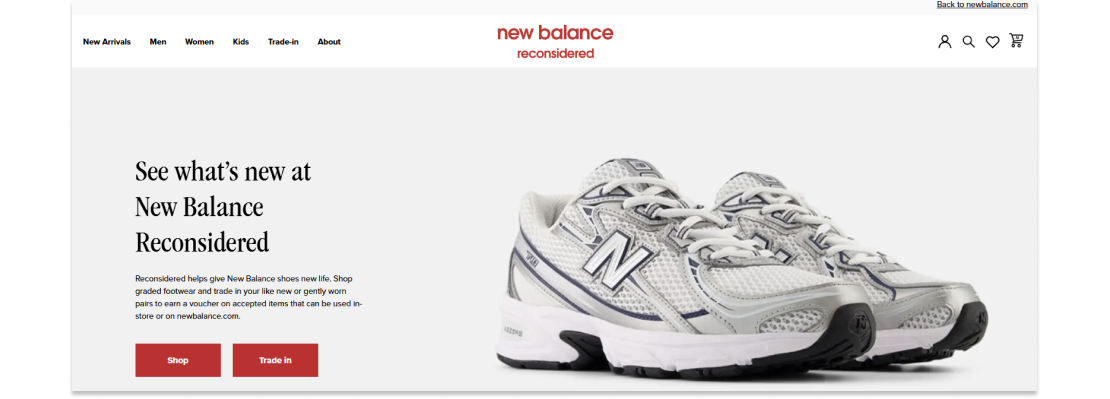
Picture this: Two online electronics retailers sell the exact same phone cases. Same supplier, same materials, same functionality. One barely moves inventory at $19.99. The other sells out weekly at $39.99. What explains this price gap? branding.
Most small business owners think branding means having a professional logo and consistent colors. While those elements matter, they’re just the surface. Real branding is about positioning – how customers perceive your value compared to competitors. It’s what makes customers choose the specialty coffee roaster charging $22 per bag over the grocery store brand at $8, even though both taste good.
In this guide, we’ll break down the direct connection between strong branding and your ability to command higher prices. You’ll learn why 59% of shoppers prefer buying from familiar brands, how your website design reinforces (or undermines) your brand value, and actionable steps to elevate your brand perception starting today. Because in eCommerce, competing on price alone is a race to the bottom. Strong branding is how you win on value instead.
Why Brand Trust Lets You Charge More
According to a recent report from Salsify, 87% of consumers would pay more for brands they trust. That’s nearly all of your customers choosing you over cheaper options, if you give them a reason to believe in what you’re selling. This trust translates directly to pricing power. Consider generic ibuprofen at $3.99 versus Advil at $8.99. Same exact ingredient, but Advil outsells generics 3 to 1 because customers trust the brand enough to pay double.
Strong branding also builds the kind of customer loyalty that transforms your business economics. Since acquiring new customers costs 5x more than keeping existing ones, retention becomes your most profitable growth strategy. When customers truly connect with your brand, they don’t just make one purchase and disappear. They buy repeatedly, leave glowing reviews, tell their friends, and essentially become unpaid members of your marketing team.
Look at New Balance, and their incredible brand refresh for proof. For decades, they were stuck as the uncool “dad shoe” company that prioritized comfort over style. Instead of fighting that perception, they embraced it strategically, partnering with streetwear designers and turning their biggest weakness into their coolest feature. The result was extraordinary: revenue hit $6.5 billion in 2023, their highest ever. Same shoes, completely different story. That’s what strategic branding does for businesses, it fundamentally changes how customers value your products and whether they see you as just another option or the only option worth considering.
The Real Cost of Weak branding
Weak branding drains revenue every single day, sometimes in ways you might not notice until it’s too late. When your eCommerce website looks outdated or unprofessional, visitors leave before they even give your products a fair chance. In a world where first impressions are made in seconds, you don’t get a do-over.
The real danger lies in being forgettable. If your branding is generic, customers may buy from you once, but months later they’ll search for “handmade soap” and never recall your name. Your brand hasn’t stuck in their minds, and those lost repeat sales add up quickly, especially since returning customers spend more than first-timers.
Even worse, weak branding forces you into endless price wars. When shoppers see your business as interchangeable with every other competitor, price becomes the only thing that matters. To keep up, you end up slashing your margins, racing to the bottom against sellers with lower costs.
Consider Blockbuster once a household name. When streaming took over, Blockbuster stuck with its old branding and refused to evolve, while Netflix and other brands felt modern, relevant, and trustworthy. Blockbuster didn’t lose because their product was bad, the business fell behind because their branding failed to keep up. That’s the difference between thriving and disappearing.
Your Website: Where branding Lives or Dies
Your website is where most customers will meet your brand for the first time. Visitors form opinions in seconds, often by the time they’ve scrolled halfway down your homepage, they’ve already decided whether to stay or move on.
Every detail counts when building trust online. Professional product photos, consistent colors and fonts, clear navigation – these aren’t just nice to have. They’re trust signals that tell shoppers you’re a serious business, not someone running a side hustle from their garage.
Mobile experience is crucial. Most people shop on their phones, and if your site is slow, clunky, or broken on mobile, you lose sales instantly. Small touches make a big difference too, from custom 404 pages that match your brand voice, to polished email receipts, to product descriptions that tell your story rather than just list features. These are the details that turn a basic store into a memorable shopping experience.
 BudgetHeating.com Before(Top) and After(Bottom) Logo
BudgetHeating.com Before(Top) and After(Bottom) Logo
Our client Budget Heating & Air Conditioning, revamped everything from their logo to their website design, making sure every element reflected their commitment to quality. The result? Instant credibility and trust from new visitors and returning customers alike. Often, you don’t need to start over, you just need your online presence to finally match the business you’ve built.
5 branding Upgrades Any Business Can Make This Week
You don’t need a huge budget, or even a designer, to start leveling up your brand. Here are five practical moves you can make right now, each with real impact on how customers see you:
Branding Fixes You Can Start Today
Choose Your Three Brand Colors (and Use Them Everywhere)
Pick one main color, a secondary, and an accent. Stick to these across your site, packaging, and marketing. Consistent colors build recognition. Customers should know it’s you just by the palette.
Craft Your “One-Sentence Story”
Why do you do what you do? Maybe you started your store to help people with sensitive skin, or you design jewelry so women feel confident. Capture it in one sentence, then put it on your About page, packaging, and social media accounts. People buy from brands they relate to.
Upgrade Your Product Photos
Line up all your product photos. Do they look like they’re from the same brand, same lighting, background, style? If not, pick your best shot as a standard and reshoot the others. Polished, consistent photos build instant credibility.
Make Your About Page Memorable
Most visitors check your About page before buying. Don’t treat it as an afterthought. Show your face, tell your real story, and explain why you’re passionate about your products. Authenticity sells.
Test Your Site on Your Phone (and Fix Any Pain Points)
Give your phone to a friend and ask them to make a purchase. Where do they get stuck or frustrated? Fix those friction points, because if one person struggles, hundreds will too.
Small steps add up fast. The goal isn’t perfection; it’s making your brand feel real, memorable, and trustworthy at every touchpoint.
Conclusion
Strong branding isn’t reserved for Nike or Starbucks. Every business, no matter how small, needs a brand that connects with customers and justifies their prices. The good news? You don’t need a massive budget or a complete overhaul to get started, sometimes all you need is a small change.
Pick one fix from this guide and implement it this week. Maybe it’s choosing your three brand colors. Maybe it’s finally updating that About page you’ve been avoiding. Small, consistent improvements compound over time into real results.
Remember, your website works 24/7. While you sleep, it’s either building trust and making sales or driving customers to your competitors. Make sure it’s representing the business you’ve worked so hard to build.
Ready to take your branding to the next level? Start with one change today. Your future customers (and your bank account) will thank you.

 Eashan Mehta
Eashan Mehta







